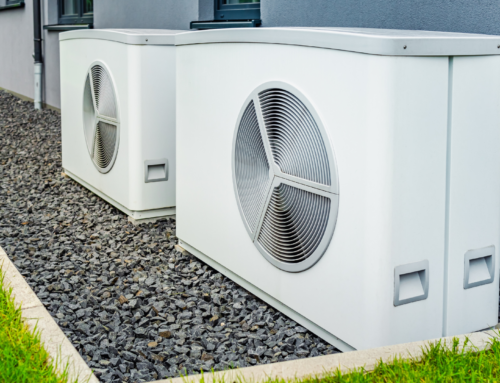Are you ready to start your next clean energy project? Click here to explore our low-cost financing options for homeowners and business owners.
What is the Greenhouse Gas Reduction Fund?
A first-of-its-kind historic $27 billion program called the Greenhouse Gas Reduction Fund (GGRF) was announced as a part of President Biden’s Inflation Reduction Act (IRA). The Environmental Protection Agency (EPA) will create and implement the program in an effort to address the climate crisis by directing financial assistance that mobilizes private investment to projects that reduce greenhouse gas emissions and other sources of air pollution.
The GGRF program aims to achieve the following primary objectives:
- Reduce greenhouse gas emissions and other air pollutants.
- Deliver the benefits of greenhouse gas- and air pollution-reducing projects to American communities, particularly low-income and disadvantaged communities (LIDACs).
- Mobilize financing and private capital to stimulate additional deployment of greenhouse gas- and air pollution-reducing projects.
Under the EPA’s Greenhouse Gas Reduction Fund, there are three programs which include the National Clean Investment Fund (NCIF), Clean Communities Investment Accelerator (CCIA), and Solar for All (SFA). These programs will support President Biden’s Justice40 Initiative, which requires that 40% of the benefits of climate-related, clean energy, and affordable sustainable housing federal investments be allocated towards disadvantaged communities that have been historically marginalized by underinvestment and overburdened by pollution.
National Clean Investment Fund (NCIF)
The National Clean Investment Fund (NCIF) is a $14 billion program within the GGRF that will establish national clean financing institutions that provide accessible, affordable financing options for clean energy projects across the U.S. Recipients of these awards will work with project developers, community organizations, and others to originate and finance projects, mobilize private capital to expand and maximize the impact of the program, and ensure millions of Americans can access capital to implement clean energy and energy efficiency projects to reduce energy bills, improve air quality, create jobs and more.
In April, CCEF was officially named as a GGRF sub-awardee through the EPA’s selection of the Coalition for Green Capital (CGC) as one of the prime recipients of funding through the NCIF. This monumental decision signifies a significant step forward in accelerating clean energy adoption and addressing climate change on a national scale. CCEF will use its allocation of the NCIF award to expand its offerings across EPA Region 8: Colorado, Utah, Wyoming, Montana, South Dakota, North Dakota, and 28 Tribal Nations throughout.
CCEF will scale its current programming and introduce new programming in support of the EPA’s three priority project categories:
- Distributed Energy Generation & Storage
- Net-Zero Emissions Buildings
- Zero-Emissions Transportation
Clean Communities Investment Accelerator (CCIA)
Another program within the GGRF is the $6 billion Clean Communities Investment Accelerator (CCIA) program. The CCIA program will capitalize community lenders that support low-income and disadvantaged communities through funding and technical assistance. The CCIA program will increase the capacity, size, and scale of community lenders that offer financing for projects that reduce greenhouse gas emissions.
Solar for All (SFA)
A total of $7 billion has been allocated to the Solar for All (SFA) program that will increase the amount and number of low-income solar programs and, as a result, enable 900,000 homes in LIDACs to access distributed solar energy.
The SFA program will achieve the GGRF objectives by significantly lowering greenhouse gas emissions and other forms of air pollution. It will provide substantial cost savings on electric bills for overburdened households and create new markets for distributed solar energy in 25 states and territories that previously lacked a statewide low-income solar program. In other words, the SFA program will produce significant environmental benefits while promoting economic equity and access to clean energy to a wide range of communities.
With new funding opportunities available, there’s never been a better time to invest in clean energy and energy efficiency upgrades. Click here to learn how you can take advantage of this exciting funding and begin making a positive impact on both your energy bills and the environment.







